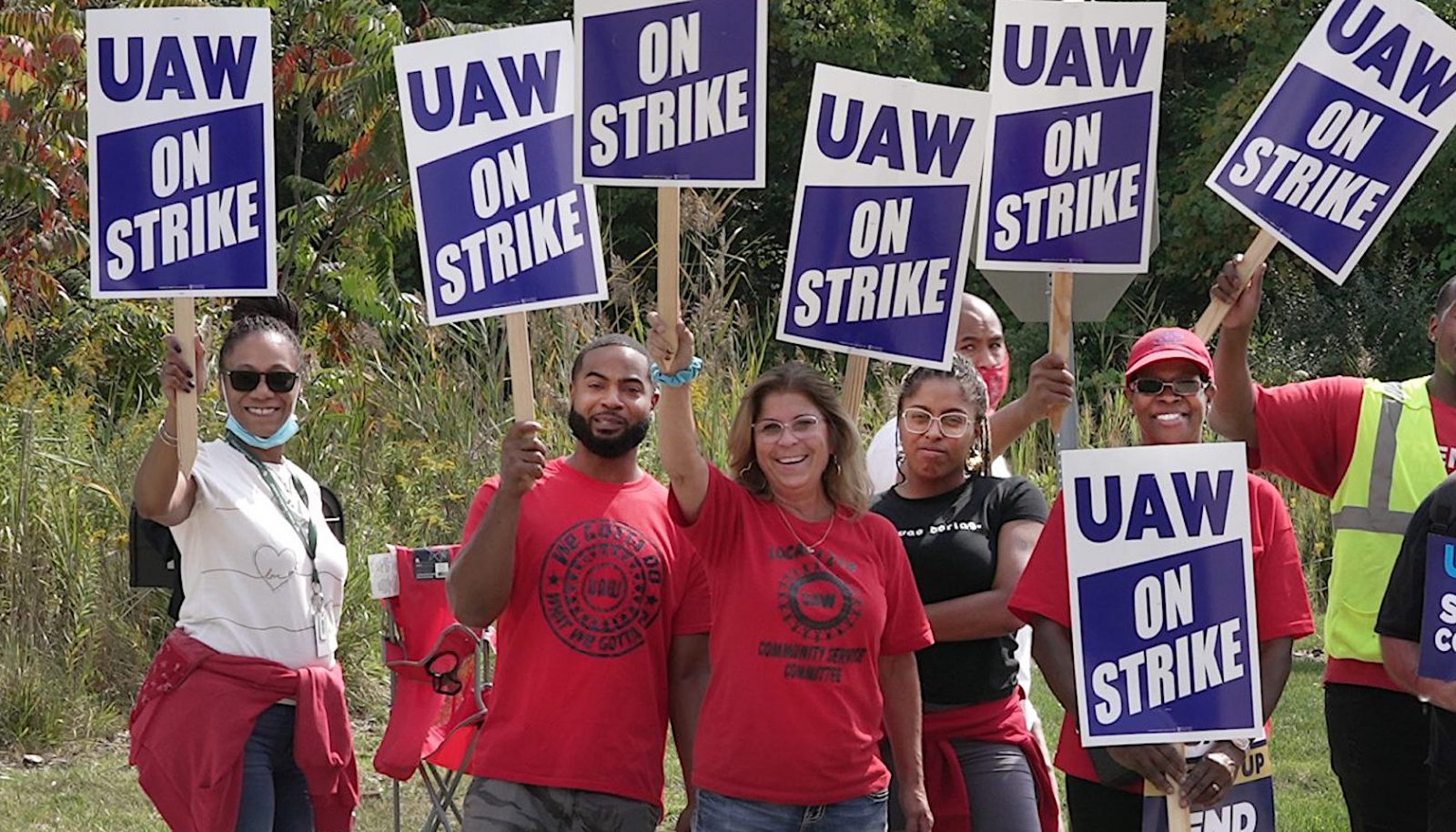The Writers Guild of America strike might be over, but the United Auto Workers (UAW) strike appears to be worsening.
Ford and General Motors laid off a combined 500 more workers after the UAW widened its historic strike against the automakers last week. Ford announced 330 layoffs on Monday after it had previously laid off 600 last month. General Motors laid off 164 employees last Friday at two of its metal centers. That translates to roughly 3,000 autoworkers being laid off since the strikes began last month.
According to a new poll, over 75% of Americans support the UAW over the Big Three automakers in the ongoing Stand Up Strike. Across partisan and demographic lines, a supermajority of Americans is standing with the UAW in the union’s fight against corporate greed at the Big Three.
According to Ford’s chief supply chain officer Liz Door, “The strikes are at an “inflection point. If prolonged, this really could have a significant impact as it extends into our other Ford factories,” she said. “We see anywhere between 325,000 to 500,000 employees that could be laid off.”
UAW president Shawn Fain expanded the historic strike last Friday after what he said was a lack of meaningful progress with Ford and GM. Just to give readers an idea of the magnitude of the strike, about 17% of UAW membership at the Detroit Three, or roughly 25,000 workers, are on strike at 43 facilities in 21 states.
The union is seeking a 36% pay increase and a return to traditional pensions and retiree health care. It is also looking for protection against the rise of electric vehicles, which workers fear will use non-union labor.
OUR THOUGHTS
Yes, there is genuine concern out there that EV production could use non-union labor, especially with all of the startups coming into the game, but of as much importance for workers is the fact that EVs actually use far fewer parts than a typical gasoline engine or hybrid-powered car. And that translates to smaller production facilities, quicker production time, and the need for fewer workers—not a good direction for the UAW.
